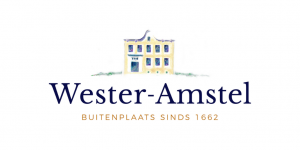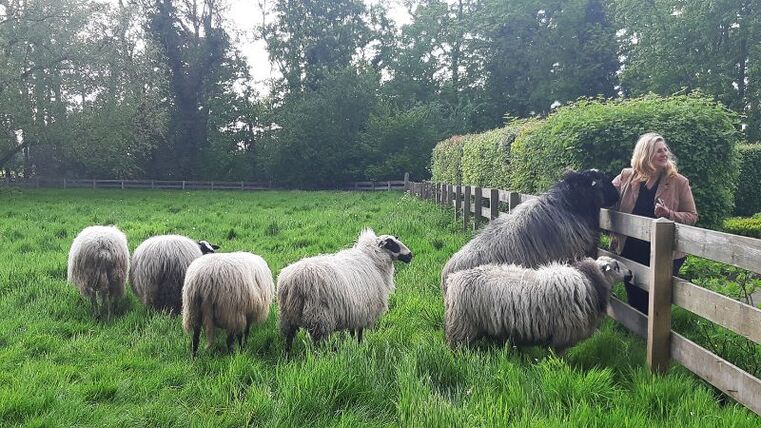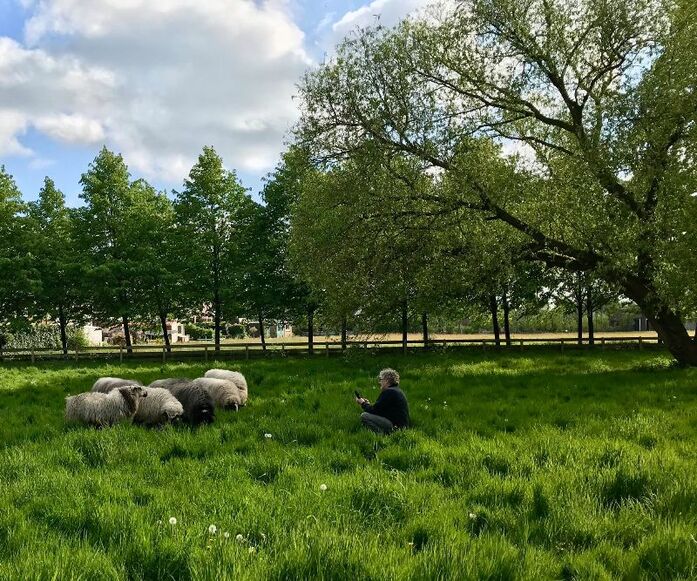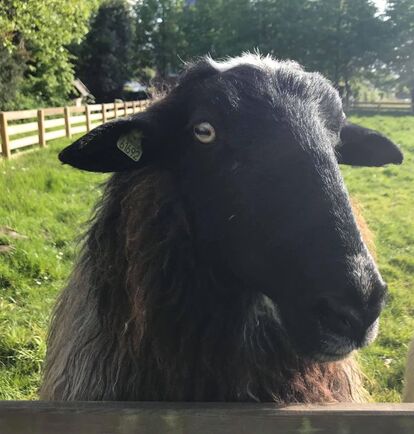The pasture at Wester-Amstel has found new tenants and is being occupied by… sheep! Keep reading to find out more about these fluffy creatures and their shepherd Regina Kouprie.
How did you become a shepherd?
As a child, animals always appealed to me. When I stayed with my parents in Drenthe, I always wanted to go and see the flock of sheep. I loved walking with the herd as they went up into the heather, and I’d always be happily waiting for them when they came back to the sheep pen in the afternoon.
Later on, I returned to the farm in Drenthe with a litter of border collies. I was used to having dogs around, so I decided to take one of them in. I named the puppy Ronja, after the character in the book by Astrid Lindgren. Ronja is someone who is synonymous with nature, a lover of animals and adventure. If you choose a border collie though, you have to be able to offer it an active life - preferably one with sheep. So, that is when my interest into sheep became really serious. We often traveled to Drenthe, where we would visit flocks of sheep and tried to find a place for ourselves in the world of sheep herders. But that doesn’t happen overnight. Ronja had to develop her skills as a sheepdog and I had to learn to become a shepherd. I took several courses and trainings. Eventually, I became a volunteer at Stichting Het Drenthe Landschap and I started a grazing company in Friesland, using sheep for the maintenance of nature reserves.
I carried out various grazing projects for the municipalities of Drachten and Heerenveen. I also worked with sheep in the nature reserves around Appelscha. The management of PWN (Pure Water & Nature) paid me a visit and were impressed with the results of controlled sheep grazing. They wanted to test controlled sheep grazing in the dunes of Holland. The aim was to combat American Cherry trees. This resulted in me becoming a full-time shepherd of a large herd in the De Kennemer Dunes National Park near Overveen / Bloemendaal. And it continues to contribute to the management of this area to this very day.
Tell us about the Schoonebeekers.
The herd at the De Kennemer Dunes National Park is very special, not only because of what they do, but also because of their heritage. They are Schoonebeekers, a nearly extinct breed originally used to graze the heather of Drenthe. Their main purpose was to produce manure for the poor grounds of Drenthe. It is a sturdy, intelligent and very sociable breed. They also look beautiful with their old-roman noses! We thought it was important to contribute to the conservation of this special breed of heather sheep.
Two years ago, it was decided that the herd in the Kennemerduinen needed to shrink as there wasn’t enough food in the area. There’s no commercial market for these animals, so it meant the ‘redundant’ sheep would have to go to the slaughterhouse. I did not want that, as I have a close relationship with all these animals. So I bought the ‘spare’ sheep, around 200…. I have an extra job finding safe havens for them to live and lead full lives. Nearby KNGF, estate owners, private individuals, a riding school, a municipality and now the beautiful country estate of Wester-Amstel have provided places. And I am lucky to have the support of Oanne De Vries, a neighbor and friend of Wester-Amstel, for keeping an eye on the sheep here and at KNGF.
What care do the sheep need?
It’s important that the sheep have sufficient amounts of food and water at their disposal. Their mineral intake must also be managed. The shaving and cutting of hooves are an annual ritual. Sometimes deworming is necessary, but I don’t opt for preventive treatments, due to drug resistance and the environmental impacts. And of course, their health needs to be monitored closely. If they get hurt or become ill, then it’s necessary to act fast. It’s also important that the sheep are not exposed to stressful situations (e.g. dogs hunting them or not being able to shelter from the sun for long periods of time).
Why is Wester-Amstel a suitable place for the sheep?
I’m always looking for safe places for the sheep to lead quiet lives. It’s not easy. I always try to find a place where the animals have enough food and water, where there’s no poisonous vegetation, where there’s supervision, where dogs can’t reach the sheep, where there’s shade or the ability to create some, and where the animals can’t be easily stolen or slaughtered illegally. Wester-Amstel offers this kind of home. Therefore, I’m really pleased that my sheep are welcome at this beautiful location.
What are some of the daily activities of a shepherd?
The activities differ per season. In the winter, you need to feed them more often. In the summer, you have to shave them and move them when all grass has been eaten. You always need to be vigilant about their health. Treating them for illnesses or taking care of the older sheep is something that can occur every day.
What can you tell us about Jozef, the black sheep?
Jozef was born in 2013 and he’s a hamel (a castrated ram). He’s very sweet, tame, and loves to come over for a nice snack and a hug. He has this beautiful dark coat from his mother, who passed away at 12-years-old from old age. Am I allowed to say ‘Jozef’ is one of my favorites? He certainly is a favorite of Oannne!
Article By: Nore-linn Movig



